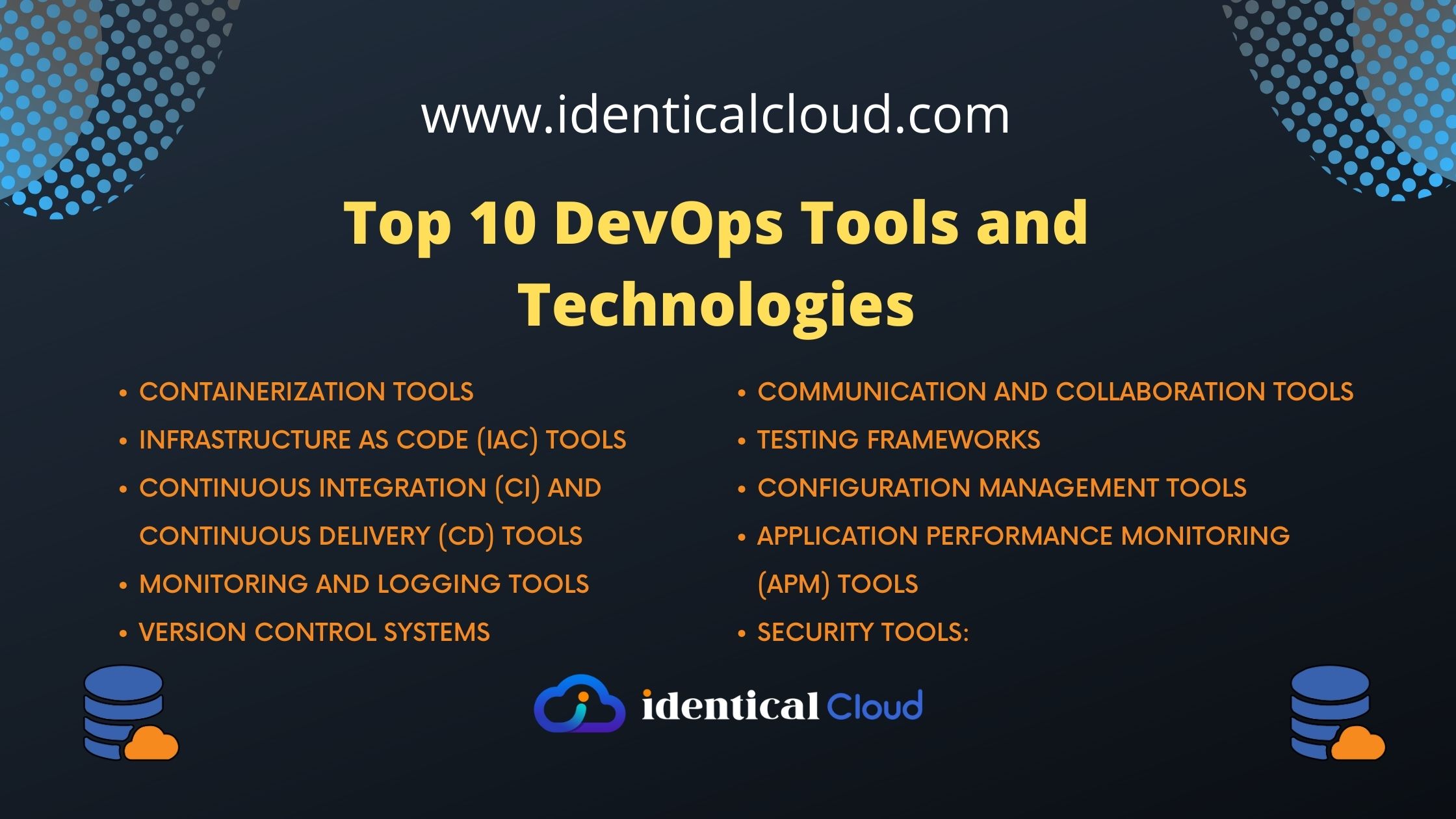
7 Key skills for DevOps professionals for career advancement in 2023
7 Key skills for DevOps professionals for career advancement in 2023
DevOps is a set of practices that combines software development (Dev) and IT operations (Ops) to shorten the systems development life cycle and provide continuous delivery with high software quality. DevOps is complementary with Agile software development; several DevOps aspects came from Agile methodology.
DevOps professionals are in high demand, and the job outlook for DevOps is expected to grow 15% between 2021 and 2031. This growth is being driven by the increasing adoption of cloud computing, containerization, and microservices.
To succeed in a DevOps career, you need to have a strong foundation in both software development and IT operations. You also need to be able to work effectively in a team environment and be able to learn new technologies quickly.
Here are the top 7 key skills for DevOps professionals for career advancement in 2023:
1. Cloud computing
Cloud computing is a broad term that refers to the delivery of computing services – including servers, storage, databases, networking, software, analytics, and intelligence – over the Internet (“the cloud”) to offer faster innovation, flexible resources, and economies of scale.
DevOps professionals need to have a strong understanding of cloud computing platforms and services, such as AWS, Azure, and GCP. This is because cloud computing is increasingly being used to develop, deploy, and manage applications.
Cloud computing enables businesses of all sizes to access on-demand, self-service, and pay-as-you-go IT resources via the internet with minimal management effort, often from a third-party cloud provider.
Cloud computing can be classified into three main categories:
- Infrastructure as a Service (IaaS): IaaS provides the basic building blocks of cloud computing, such as virtual machines, storage, and networking.
- Platform as a Service (PaaS): PaaS provides a platform for developing, deploying, and managing applications.
- Software as a Service (SaaS): SaaS provides applications that can be accessed over the internet, such as customer relationship management (CRM) and enterprise resource planning (ERP) software.
Cloud computing offers a number of benefits for businesses, including:
- Cost savings: Cloud computing can help businesses save money on IT costs, such as hardware, software, and energy costs.
- Scalability: Cloud computing is scalable, meaning that businesses can easily add or remove resources as needed.
- Agility: Cloud computing can help businesses be more agile and responsive to change.
- Reliability: Cloud computing is highly reliable, with providers offering up to 99.99% uptime.
- Security: Cloud computing providers offer a variety of security features to protect customer data.
Some of the most popular cloud computing providers include:
- Amazon Web Services (AWS)
- Microsoft Azure
- Google Cloud Platform (GCP)
- IBM Cloud
- Salesforce
Cloud computing is a rapidly growing industry, and it is expected to continue to grow in the coming years. If you are interested in learning more about cloud computing, there are a number of resources available online and in libraries.
2. Containerization
Containerization is a technology that allows you to package an application and all of its dependencies into a single unit. This makes it easy to deploy and manage applications in a variety of environments, including cloud, on-premises, and hybrid.
DevOps professionals need to have a good understanding of containerization technologies, such as Docker and Kubernetes. Docker is a tool that allows you to build, ship, and run containerized applications. Kubernetes is a platform for automating deployment, management, and scaling of containerized applications.
Containerization technologies such as Docker and Kubernetes are becoming increasingly popular, as they offer a number of benefits, including:
- Portability: Containerized applications can be deployed on any platform that supports the containerization technology being used.
- Scalability: Containerized applications can be easily scaled up or down by adding or removing containers.
- Efficiency: Containerized applications are efficient because they share the underlying operating system kernel.
- Security: Containerized applications can be isolated from each other, which helps to improve security.
Containerization is a powerful technology that can be used to improve the way that applications are developed, deployed, and managed. If you are interested in learning more about containerization, there are a number of resources available online and in libraries.
3. Microservices
Microservices are a software development architecture that structures an application as a collection of loosely coupled services. This makes it easier to develop, deploy, and maintain applications.
DevOps professionals need to have a good understanding of microservices architecture and how to implement it. Microservices can be deployed and managed using containerization technologies such as Docker and Kubernetes.
Microservices offer a number of benefits, including:
- Scalability: Microservices can be scaled up or down independently, which makes it easy to scale the application as a whole.
- Agility: Microservices make it easier to develop and deploy new features, and to fix bugs.
- Resilience: If one microservice fails, the other microservices can continue to operate.
- Security: Microservices can be isolated from each other, which helps to improve security.
Some of the challenges of microservices include:
- Complexity: Microservices can make applications more complex to develop and manage.
- Communication overhead: Microservices need to communicate with each other, which can add overhead to the system.
- Testing: Microservices need to be tested individually and as a whole, which can be challenging.
Despite the challenges, microservices are a popular software development architecture because they offer a number of benefits. Microservices are used by a variety of companies, including Amazon, Google, and Netflix.
4. Continuous integration and continuous delivery (CI/CD)
CI/CD is a set of practices that automates the software development and delivery process. This helps to improve the quality and efficiency of software delivery.
DevOps professionals need to have a good understanding of CI/CD tools and practices. CI/CD tools can be used to automate tasks such as building, testing, and deploying applications.
CI/CD involves the following steps:
- Continuous integration: Developers integrate their code changes into a shared repository frequently, and the code is automatically built and tested.
- Continuous delivery: The code that has passed all of the tests is automatically deployed to a staging environment. Once the code has been tested and approved, it is deployed to production.
CI/CD offers a number of benefits, including:
- Improved quality: CI/CD helps to improve the quality of software by automating the testing process.
- Faster delivery: CI/CD helps to deliver software to customers more quickly.
- Reduced risk: CI/CD helps to reduce the risk of deploying software to production by automating the deployment process.
There are a number of different CI/CD tools and platforms available, such as Jenkins, CircleCI, and Travis CI. These tools can be used to automate the build, test, and deploy process.
Here is an example of how CI/CD can be used:
A team of developers is working on a new web application. The developers are using a CI/CD tool to automate the build, test, and deploy process.
When a developer makes a change to the code, the change is automatically pushed to the shared repository. The CI/CD tool then automatically builds and tests the code. If the code passes all of the tests, it is automatically deployed to a staging environment.
Once the code has been tested and approved, the developers can deploy it to production with a single click.
CI/CD is a powerful set of practices that can be used to improve the quality and efficiency of software delivery. If you are interested in learning more about CI/CD, there are a number of resources available online and in libraries.
5. Infrastructure as code
Infrastructure as code is a practice of managing and provisioning infrastructure using code. This makes it easier to automate the deployment and management of infrastructure.
IaC tools can be used to automate tasks such as provisioning servers, configuring networks, and deploying applications. IaC tools also make it easier to version control and manage infrastructure changes.
There are a number of different IaC tools available, such as Terraform, Ansible, and Chef. These tools can be used to manage a variety of infrastructure providers, including AWS, Azure, and GCP.
Here is an example of how IaC can be used:
A company wants to deploy a new web application to AWS. The company can use an IaC tool to define the infrastructure that the web application needs, such as EC2 instances, EBS volumes, and security groups.
The company can then use the IaC tool to deploy the infrastructure to AWS. The IaC tool will automatically provision the resources that are defined in the code.
Once the infrastructure is deployed, the company can use the IaC tool to manage it. For example, the company can use the IaC tool to scale the web application up or down, or to deploy updates to the web application.
IaC offers a number of benefits, including:
- Automation: IaC can help to automate the deployment and management of infrastructure, which can save time and money.
- Consistency: IaC can help to ensure that infrastructure is deployed and managed in a consistent way.
- Version control: IaC can help to version control and manage infrastructure changes.
- Security: IaC can help to improve security by automating the deployment of security controls.
IaC is a powerful practice that can be used to improve the efficiency, consistency, and security of infrastructure management. If you are interested in learning more about IaC, there are a number of resources available online and in libraries.
6. Security
Security is a critical aspect of DevOps. DevOps professionals need to be able to implement and manage security measures throughout the software development and delivery process. This includes things like secure coding practices, vulnerability scanning, and penetration testing.
DevOps professionals need to be familiar with a variety of security tools and technologies. They also need to be able to develop and implement security policies and procedures.
Here are some tips for securing cloud computing environments:
- Use strong passwords and multi-factor authentication: Use strong passwords for all of your cloud computing accounts, and enable multi-factor authentication whenever possible.
- Encrypt your data: Encrypt your data before storing it in the cloud. This will help to protect your data if it is compromised.
- Use access control lists: Use access control lists to control who has access to your cloud computing resources.
- Monitor your cloud computing environment: Monitor your cloud computing environment for suspicious activity.
- Keep your software up to date: Keep your cloud computing software up to date with the latest security patches.
In addition to these general tips, there are a number of specific security measures that you can take depending on the cloud computing services that you are using. For example, if you are using a cloud computing platform to develop and deploy applications, you should implement security measures such as secure coding practices and vulnerability scanning.
7. Communication and collaboration
DevOps is a team-based approach to software development and delivery. DevOps professionals need to be able to communicate and collaborate effectively with other team members, including developers, operations engineers, and QA engineers.
DevOps professionals need to be able to communicate complex technical concepts in a clear and concise way. They also need to be able to work effectively in a cross-functional team environment.
Here are some tips for improving communication and collaboration in cloud computing environments:
- Use cloud-based communication and collaboration tools: There are a number of cloud-based communication and collaboration tools available, such as Slack, Microsoft Teams, and Zoom. These tools can help teams to communicate and collaborate more effectively.
- Establish clear communication and collaboration guidelines: It is important to establish clear communication and collaboration guidelines for your team. These guidelines should define things like how often team members should communicate, what communication tools should be used, and how decisions should be made.
- Hold regular team meetings: It is important to hold regular team meetings, even if team members are distributed across multiple locations. These meetings can help to keep team members aligned and to promote collaboration.
- Create a culture of collaboration: It is important to create a culture of collaboration within your team. This means encouraging team members to share ideas, to work together on projects, and to help each other out.
By following these tips, you can improve communication and collaboration in your cloud computing environment. This will lead to a more efficient and productive team.
In addition to these technical skills, DevOps professionals also need to have strong soft skills, such as problem-solving, critical thinking, and teamwork.
In the dynamic field of DevOps, continuous learning and adaptability are essential for career advancement. By acquiring these key skills, DevOps professionals can navigate the ever-changing landscape and contribute to the success of their organizations in 2023 and beyond. Stay curious, embrace new technologies, and seek opportunities for hands-on experience to hone your skills and excel in your DevOps career.






